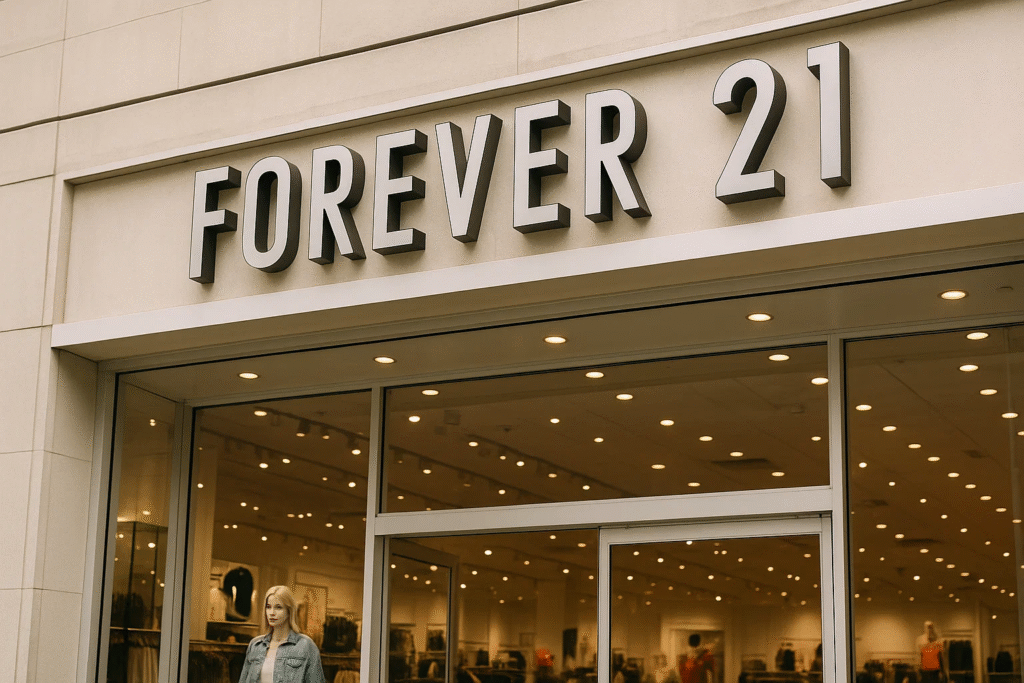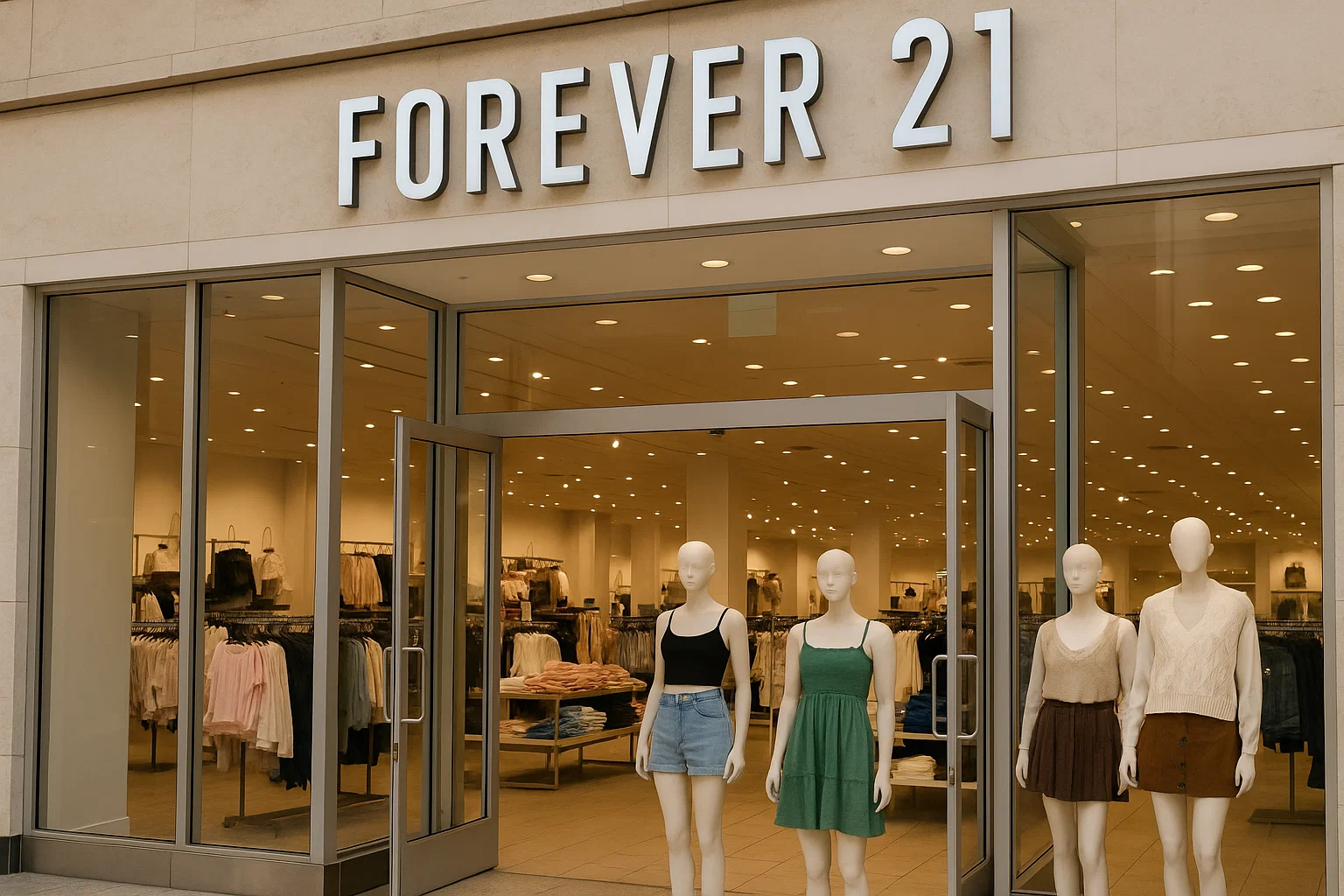Introduction: The Forever 21 Phenomenon
Forever 21, a household name in the fast-fashion industry, has been shaping the way consumers shop for trendy, affordable clothing. From its humble beginnings in Los Angeles to becoming a global fashion powerhouse, Forever 21 has had an undeniable impact on the fashion landscape. However, the company’s journey has not been without its challenges. This ultimate guide will explore Forever 21’s history, its rise to prominence, the challenges it faces, and how it is working toward a sustainable future in the ever-changing retail industry.
The Origins of Forever 21
Founding of Forever 2 : A Dream Realized
Forever story began in 1984 when Do Won Chang and his wife, Jin Sook Chang, opened the first store in Los Angeles. With a vision to offer affordable, trendy clothing for young adults, the couple set out to create a brand that would revolutionize the fashion world. The name “Fashion 21” was soon changed to Forever 21 to reflect the brand’s youthful energy and timeless appeal.
Early Success and Expansion of Forever 21
In the early years, Forever 21 focused on creating a unique shopping experience for its customers. The brand quickly caught the attention of young shoppers who were eager to embrace the latest trends. The company’s ability to stay ahead of fashion trends, combined with affordable pricing, allowed Forever to experience rapid growth.
The Fast Fashion Revolution: How Forever 21 Led the Charge
The Secrets Behind Forever 21’s Fast Fashion Model
Forever 21’s business model is rooted in the concept of fast fashion, which involves quickly producing clothing based on the latest trends. The brand’s ability to design and manufacture clothes in record time helped it become a leader in this sector. Forever was one of the first retailers to capitalize on the demand for quick turnaround times, offering customers the latest styles at unbeatable prices.
Expanding Globally: Forever 21’s International Success

The brand’s success in the U.S. allowed it to expand internationally, reaching markets in Canada, Mexico, South Korea, and beyond. By opening hundreds of stores across the globe, Forever became a dominant force in the fast-fashion industry, attracting millions of customers each year. Its commitment to providing affordable, trendy clothing made it a popular choice for young shoppers worldwide.
Forever 21’s Business Model: Why It Works
In-House Design and Low-Cost Production
Forever secret to success lies in its in-house design team and efficient production process. By creating designs internally, the brand can quickly replicate the latest runway trends and produce them at a fraction of the cost. This streamlined process allows to offer trendy, affordable fashion without compromising on quality.
The Power of Store Layouts and Visual Merchandising
The layout and design of Forever stores are another key factor that contributes to the brand’s success. Each store is designed to showcase the latest trends and encourage impulse buying. The spacious store layouts, combined with eye-catching visual merchandising, create an inviting environment for customers to explore new styles.
The Challenges Facing Forever 21
The Decline of Physical Retail: How Online Shopping Affects Forever 21
As e-commerce grew, Forever began to face significant challenges. The rise of online retailers like Amazon and ASOS changed the way consumers shop, and Forever struggled to keep up with the shift. Despite having an online presence, the brand found it difficult to compete with online-only retailers that offered fast shipping, competitive pricing, and a wider range of products.
Bankruptcy: Forever 21’s Struggles with Financial Stability
In 2019, Forever 21 filed for bankruptcy, marking a turning point in the company’s journey. The brand was burdened with mounting debt and declining sales, prompting the company to close several underperforming stores. This setback revealed the challenges that Forever 2 faced in adapting to changing consumer behavior and a rapidly evolving retail environment.
The Road to Recovery: Forever 21’s Strategy for 2025
Restructuring and the Acquisition by Authentic Brands Group
Following its bankruptcy, Forever was acquired by Authentic Brands Group, a company known for managing struggling brands. This acquisition marked the beginning of a new chapter for 21, with a renewed focus on e-commerce and a streamlined store presence. The brand also began reworking its strategy to appeal to eco-conscious consumers and adapt to the demand for sustainable fashion.
Sustainability: Forever 21’s Efforts to Go Green
As sustainability became a focal point in the fashion industry, Forever 21 launched several initiatives aimed at reducing its environmental impact. The company began using more eco-friendly materials in its clothing and implementing recycling programs in stores. These efforts were part of a larger strategy to shift the brand’s image and appeal to consumers who prioritize sustainability.
The Future of Forever
Embracing Technology and Innovation in Retail
To remain competitive, 21 must continue to innovate and adopt new technologies. The brand is investing in digital tools, including augmented reality (AR) and virtual try-ons, to enhance the online shopping experience. These innovations aim to attract tech-savvy shoppers and make shopping more engaging and interactive.
A Renewed Focus on E-Commerce and Personalization
Moving forward, Forever plans to place a stronger emphasis on e-commerce. The brand will focus on providing a personalized shopping experience through targeted ads, influencer collaborations, and a revamped website. Forever 21 is working to capture the attention of younger consumers who are increasingly looking for personalized, online shopping experiences.
Conclusion: What’s Next for Forever 21?
21’s journey has been one of rapid growth, setbacks, and transformation. The brand’s rise to prominence was fueled by its innovative approach to fast fashion, while its challenges reflect the shifting dynamics of the retail industry. As the brand continues to adapt to changing consumer preferences and embrace sustainability, Forever ’s future remains uncertain but full of potential. By embracing new technologies and staying ahead of fashion trends, Forever hopes to reclaim its position as a leading force in the fashion industry.
[…] Also read: {forever 21} […]





